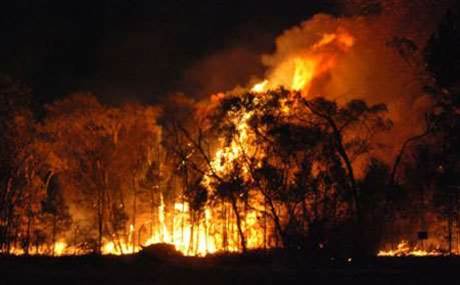Australia’s telcos have given their first in-depth look at the operational challenges they faced in the 2019-20 bushfires, revealing - among many things - that rural firefighters refueled generators to keep some base stations online.

The insights are the collective experience of members of the Communications Resilience Admin Industry Group (CRAIG) within Communications Alliance.
CRAIG’s members include AARnet, AMTA, Aussie Broadband, Cisco, Enex Testlab, NBN Co, NEXTDC, NSW Telco Authority, Optus, Telstra, VHA and Vocus.
Their experiences are drawn together in a submission [pdf] to the Royal Commission into National Natural Disaster Arrangements, which has been released outside of that process.
The telcos express a “deep and sincere appreciation to professional and volunteer firefighters and to members of the Australian Defence Force (ADF) who have helped protect telecommunications infrastructure and personnel from the fires in many Australian States during late 2019 and early 2020.”
“The brave and determined interventions of firefighters and the ADF – often in very hazardous and changeable conditions – saved a large volume of vital telecommunications network infrastructure from damage or complete destruction and allowed services to be restored more quickly than otherwise would have been possible,” the telcos said.
“Firefighters also played indispensable roles, in many cases, to help maintain back-up power to network sites that were cut off from mains electricity supply.”
Individual telcos had agreements in place to allow Country Fire Authority (CFA) and Rural Fire Service (RFS) personnel to “refuel generators that were providing back-up power to mobile base stations.” “This was particularly valuable in circumstances where site access was restricted, or it was difficult for service providers to undertake this task themselves,” the telcos said.
However, the telcos noted that in some cases firefighters reported that they had been directed not to offer this assistance.
“For future events it would be very helpful to have a consistent inter-agency position on this issue and consideration of using ADF resources to assist with refuelling generators,” the telcos said.
The members of the CRAIG also saw opportunities to improve communication and coordination during a future catastrophic event.
In particular, the telcos wanted better visibility into predicted fire movements.
“To the extent available, having access to longer range fire-movement forecasts (e.g. spanning periods greater than 24 hours) could allow service providers to better prepare for and manage resource movements, service restoration and recovery efforts, as well as messaging to staff and contractors,” they said.
The telcos also suggested involving data centre operators, too, as more facilities and data processing is pushed to the network edge.
“It should be noted that data centre operators are increasingly becoming a significant part of Australia’s communication and supply chain infrastructure and these facilities also need to be considered as part of disaster management arrangements, with more data centres locating in non-CBD areas,” they said.
Telcos also sought stronger communication arrangements not just with the authorities but also with energy providers, whom they relied upon for mains power.
“There was a strong consensus amongst CRAIG members about the need for improved flow of information from, and coordination between the energy sector and service providers on issues of power supply management particularly as to when power would be restored to specific locations/sites,” they said.
In addition, the telcos sought clarity on arrangements for accessing impacted infrastructure - such as whether they could join emergency services convoys - and on how much vegetation around infrastructure sites they could clear, particularly when they were close to the boundaries of other landowners’ holdings.




_(20).jpg&h=140&w=231&c=1&s=0)
_(22).jpg&h=140&w=231&c=1&s=0)



_(26).jpg&w=100&c=1&s=0)

 iTnews Executive Retreat - Security Leaders Edition
iTnews Executive Retreat - Security Leaders Edition












_(1).jpg&h=140&w=231&c=1&s=0)



